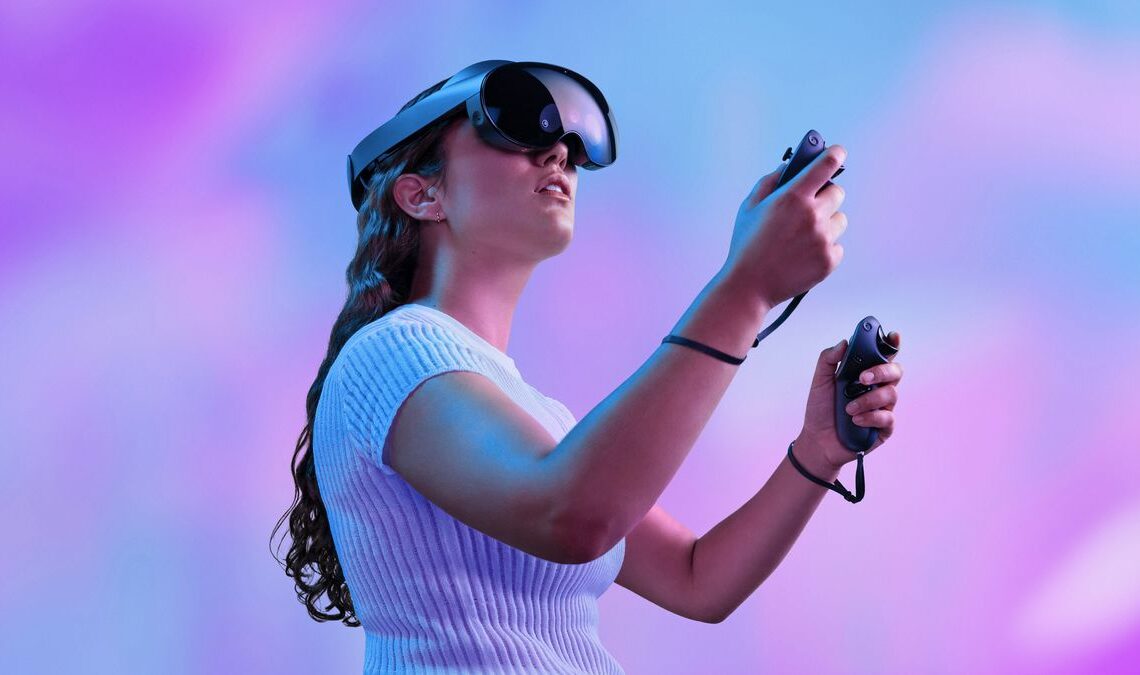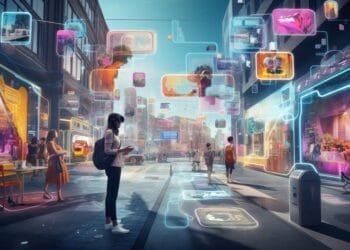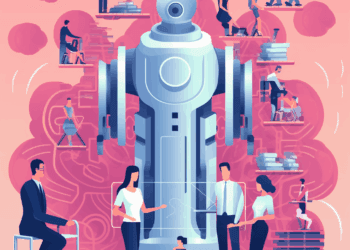In the relentless march of technological innovation, few advancements hold as much transformative promise as Augmented Reality (AR) and Virtual Reality (VR). No longer confined to the realms of science fiction, these immersive technologies are rapidly redefining how we perceive, interact with, and experience the digital world, blurring the lines between the physical and virtual. From transporting us to fantastical digital realms to overlaying critical information onto our real surroundings, AR/VR is poised to revolutionize industries, education, entertainment, and everyday life. This comprehensive article delves into the core principles of AR and VR, exploring their foundational technologies, their diverse and expanding applications across various sectors, and the critical challenges that accompany their widespread adoption.
What are AR and VR?
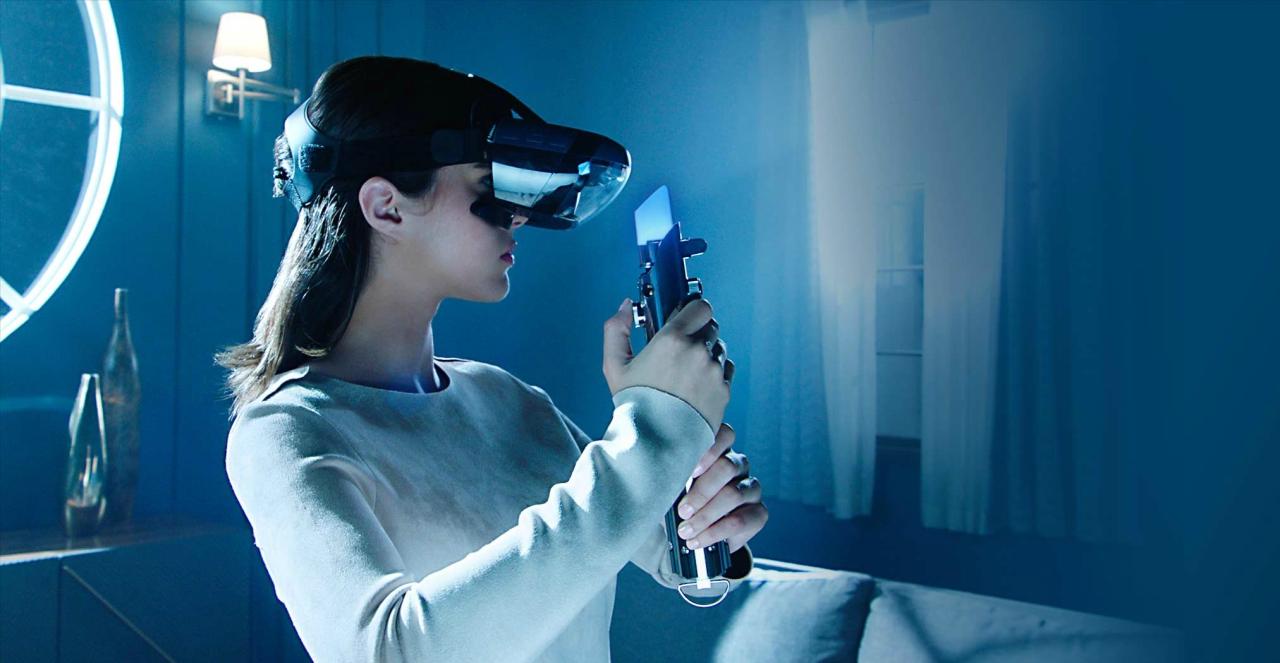
At their essence, both Augmented Reality (AR) and Virtual Reality (VR) are technologies designed to enhance or create immersive digital experiences. While often grouped together, they achieve this in distinct ways:
- Virtual Reality (VR): VR completely immerses users in a simulated digital environment. It typically requires a head-mounted display (HMD) or VR headset that blocks out the real world, replacing it with a computer-generated one. The goal is to create a strong sense of “presence” – the feeling of actually being there. Users can interact with the virtual environment through controllers, hand tracking, or even eye tracking. VR aims to transport you to another world.
- Augmented Reality (AR): AR overlays digital information, images, or 3D models onto the real world. Unlike VR, AR doesn’t replace your view of reality; it enhances it. This is typically experienced through smartphone cameras, tablets, or specialized AR glasses. Think of a digital layer on top of what you physically see. AR aims to bring the digital world into your physical one.
The distinction is crucial: VR replaces reality, while AR augments it. Both, however, promise to reshape how humans interact with digital content and information.
A. Core Technologies Powering AR and VR
The evolution and increasing sophistication of AR and VR are driven by a convergence of advanced hardware and software components.
- Head-Mounted Displays (HMDs) / VR Headsets: These are the primary hardware for VR, ranging from smartphone-powered cardboard viewers to standalone devices (Meta Quest, Pico Neo) and tethered systems (Valve Index, PS VR2) connected to powerful PCs or consoles. Key features include:
- High-Resolution Displays: To minimize the “screen-door effect” and provide realistic visuals.
- Wide Field of View (FoV): To mimic natural human peripheral vision.
- Low Latency: Crucial to prevent motion sickness and ensure a smooth, responsive experience.
- Tracking Systems:
- Positional Tracking (6DoF – Six Degrees of Freedom): Allows users to move freely in physical space and have those movements accurately reflected in the virtual world (e.g., walk around, lean in). This is essential for a true sense of presence.
- Rotational Tracking (3DoF – Three Degrees of Freedom): Tracks only head rotation (pitch, yaw, roll) without tracking physical movement in space.
- Sensors and Cameras: Both AR and VR rely heavily on various sensors for tracking and environmental understanding:
- Accelerometers, Gyroscopes, Magnetometers: For tracking head and hand movements.
- Infrared (IR) Sensors: Used for external base stations (like SteamVR Lighthouse) or inside-out tracking on headsets to map the environment and user position.
- RGB Cameras: For passthrough AR (showing the real world through the VR headset) and for environmental understanding in AR devices.
- Depth Sensors (Lidar, Structured Light): Crucial for AR to accurately understand the geometry of the real world, enabling realistic placement of virtual objects and occlusion (virtual objects correctly appearing in front of or behind real objects).
- Controllers and Input Devices:
- Handheld Controllers: Allow users to interact with virtual objects through buttons, joysticks, and haptic feedback (e.g., Meta Quest controllers, Valve Index Knuckles).
- Hand Tracking: Using cameras to directly track hand and finger movements, allowing for more intuitive, controller-less interaction.
- Eye Tracking: Used for foveated rendering (rendering only the area where the user is looking in high resolution to save processing power) and for direct interaction (e.g., selecting objects by gazing).
- Graphics Processing Units (GPUs): High-performance GPUs are essential for rendering complex 3D virtual environments at high frame rates with low latency, preventing motion sickness and providing a smooth visual experience.
- Software Development Kits (SDKs) and Platforms: Frameworks like Unity and Unreal Engine provide the tools for developers to create immersive AR/VR experiences. Specific SDKs (e.g., Meta’s Presence Platform, Apple’s ARKit, Google’s ARCore) provide functionalities for device interaction, environmental understanding, and content rendering.
- Network Connectivity (5G/Edge Computing): For cloud-rendered VR/AR experiences or collaborative immersive environments, high-speed, low-latency connectivity (like 5G) and processing at the network’s edge are crucial to ensure smooth, responsive interactions and reduce the need for powerful on-device hardware.
- Haptic Feedback Systems: Beyond controllers, haptic suits, gloves, and vests are being developed to allow users to “feel” virtual objects or environmental sensations, further enhancing immersion.
AR/VR’s Transformative Impact Across Industries
The disruptive potential of AR and VR is being realized across a diverse range of sectors, fundamentally changing how we learn, work, play, and connect.
A. Gaming and Entertainment
Gaming has been a primary driver and early adopter of VR, while AR is creating new layers of interactive entertainment in the real world.
- Fully Immersive Gaming: VR transports players into highly realistic or fantastical digital worlds, offering unparalleled immersion in genres from action-adventure to simulation and horror. The sense of presence elevates the gaming experience far beyond traditional screens.
- Virtual Concerts and Events: Artists are hosting live performances and interactive events in virtual worlds, allowing millions of fans globally to attend, socialize with each other, and experience unique digital spectacles, often featuring exclusive virtual merchandise.
- Interactive Storytelling: VR enables new forms of narrative experiences where users are active participants in the story, influencing outcomes through their actions and decisions, creating deeply personal and memorable interactions.
- AR-Enhanced Mobile Games: Games like Pokémon GO have popularized AR, overlaying digital characters onto the real world through smartphone cameras, blending gaming with physical exploration.
- Location-Based VR/AR Experiences: Dedicated VR arcades and AR experiences in theme parks offer high-end, untethered immersion, allowing groups to share adventures in large physical spaces mapped to virtual environments.
B. Education and Training
AR and VR are revolutionizing learning by providing immersive, hands-on, and highly engaging educational environments.
- Simulated Training:
- Medical Training: Surgeons can practice complex procedures in virtual operating rooms, refining skills without risk to real patients. Medical students can explore human anatomy in 3D.
- Military and Aviation: Pilots can train in highly realistic flight simulators, and soldiers can practice combat scenarios in virtual environments, improving tactical skills and decision-making under pressure.
- Technical Skills: Engineers and technicians can train on virtual replicas of complex machinery (e.g., jet engines, factory equipment), practicing assembly, maintenance, and troubleshooting in a safe, cost-effective manner.
- Immersive Field Trips and Exploration: Students can embark on virtual field trips to ancient civilizations, distant planets, inside the human body, or even abstract scientific concepts (e.g., quantum mechanics), making learning more engaging and accessible than textbooks.
- Language Learning: AR apps can overlay translations onto real-world objects, while VR environments can simulate real-life conversational scenarios for language practice, providing immersive and context-rich learning.
- Collaborative Learning: Students and educators can gather in shared virtual spaces from anywhere in the world to collaborate on projects, conduct experiments, and engage in interactive discussions.
C. Healthcare
AR and VR are finding increasingly vital applications in medical treatment, diagnostics, and surgical planning.
- Pain Management and Therapy: VR is used to distract patients during painful procedures, help manage chronic pain through virtual relaxation environments, and assist in physical therapy by gamifying exercises.
- Phobia and PTSD Treatment: VR exposure therapy allows patients to gradually confront their fears (e.g., fear of heights, public speaking) or process traumatic memories in a controlled, safe virtual environment.
- Surgical Planning and Visualization: Surgeons can use VR to create 3D models from patient scans for pre-operative planning, visualizing complex anatomies and practicing intricate procedures. AR overlays critical patient data or anatomical structures directly onto the patient during surgery, enhancing precision.
- Medical Education: Medical students can use VR to explore detailed 3D anatomical models, simulate diagnostic procedures, and practice patient communication skills in virtual settings.
- Mental Health Support: VR provides immersive environments for mindfulness, meditation, and stress reduction, offering a new tool for mental wellness.
D. Retail and E-commerce
AR and VR are transforming how consumers discover, try, and purchase products, blurring the lines between online and offline shopping.
- Virtual Try-On: AR apps allow customers to virtually “try on” clothing, eyeglasses, makeup, or jewelry using their smartphone camera before making a purchase, reducing returns and enhancing confidence.
- Home Furnishing Visualization: AR enables customers to virtually place 3D models of furniture, appliances, or decor items in their own homes to see how they fit and look before buying, improving purchase decisions.
- Immersive Virtual Storefronts: Brands are creating persistent 3D virtual stores in the metaverse or on their websites where customers can walk around, browse 3D product models, interact with virtual sales assistants, and attend virtual product launches.
- Enhanced Product Demos: AR can provide interactive digital overlays on physical products in-store, offering more information, reviews, or usage demonstrations.
- Digital Fashion and NFTs: The rise of digital fashion items as NFTs in metaverse platforms allows users to “wear” unique digital apparel on their avatars, creating new revenue streams for designers and brands.
E. Work and Collaboration
AR and VR are redefining remote work, fostering more immersive collaboration, and streamlining complex tasks.
- Virtual Meeting Spaces: VR platforms offer immersive virtual meeting rooms where remote teams can gather as avatars, fostering a greater sense of presence, collaboration, and engagement than traditional video calls.
- Remote Assistance and Expert Guidance (AR): Field technicians can wear AR glasses that overlay real-time instructions or allow remote experts to “see” what they see and provide visual guidance (e.g., for machinery repair, complex assembly). This reduces travel costs and improves efficiency.
- Immersive Design and Prototyping: Engineers, architects, and designers can collaborate on 3D models and prototypes in shared VR spaces, manipulating designs in real-time and identifying flaws before physical production.
- Data Visualization: Complex datasets can be visualized in immersive 3D environments, allowing analysts to gain deeper insights and identify patterns that might be missed in 2D dashboards.
- Training and Onboarding: Companies use VR to train new employees in realistic simulations, practicing customer service scenarios, safety protocols, or equipment operation in a safe, consistent environment.
Challenges and Considerations in the AR/VR Era
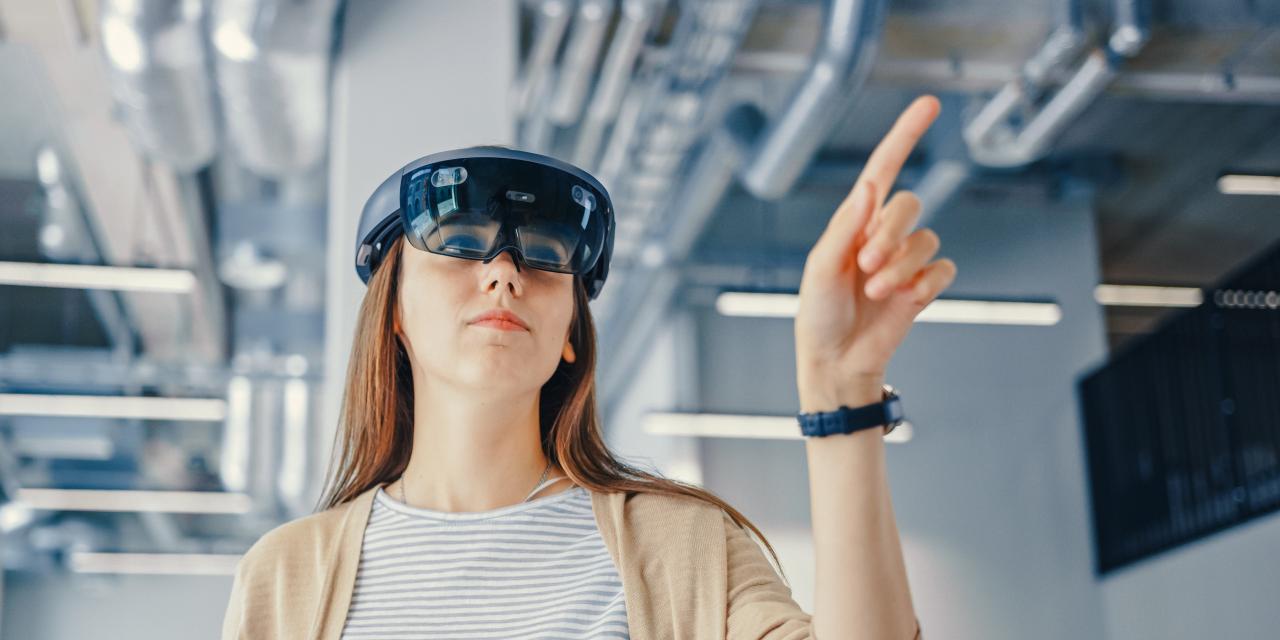
Despite their immense potential, the widespread adoption of AR and VR faces significant hurdles and critical ethical considerations that demand careful attention and proactive solutions.
A. Technical Hurdles
- Hardware Limitations: Current AR/VR headsets are often bulky, expensive, and require significant processing power, limiting widespread consumer adoption. Battery life and thermal management are also challenges.
- Motion Sickness (VR): Discrepancies between visual motion and physical sensation can cause motion sickness for some users, hindering prolonged VR usage.
- Interoperability: The AR/VR landscape is fragmented, with different platforms, SDKs, and proprietary ecosystems hindering seamless content and avatar portability between experiences. Achieving a truly open “metaverse” is a massive challenge.
- Rendering Power and Latency: High-fidelity AR/VR experiences demand extremely powerful GPUs to render complex 3D environments at high frame rates with ultra-low latency (critical to avoid motion sickness). This requires significant local computing power or highly optimized cloud/edge rendering.
- Tracking Accuracy: Ensuring precise and reliable tracking of user movements, hands, eyes, and real-world environments (for AR) is fundamental for a convincing and comfortable immersive experience.
B. Content Development and Ecosystem Challenges
- Content Creation Complexity: Developing high-quality AR/VR content (3D models, interactive environments, complex interactions) is significantly more resource-intensive and requires specialized skills compared to 2D web or mobile app development.
- Limited Killer Apps: While compelling experiences exist, a truly mass-market “killer app” that drives widespread consumer adoption beyond early adopters is still emerging.
- Discovery and Monetization: Effectively discovering immersive content and establishing sustainable monetization models for AR/VR creators are ongoing challenges in a nascent ecosystem.
C. Privacy and Security Concerns
- Pervasive Data Collection: AR/VR devices collect vast amounts of highly personal data, including biometric data (eye movements, facial expressions), spatial data (scans of your home/environment), and physiological responses. This raises significant privacy concerns.
- Data Breaches: The compromise of this highly sensitive personal data could lead to severe privacy violations, identity theft, or even physical security risks if spatial maps of homes are leaked.
- Eye Tracking and Emotion Inference: Eye-tracking data can reveal what users are looking at, how they react, and potentially their emotional states, opening doors for unprecedented behavioral profiling and targeted advertising.
- Virtual Harassment and Safety: As immersive social spaces grow, issues of harassment, bullying, and inappropriate content become more acute due to the heightened sense of presence.
- Digital Identity and Impersonation: Managing secure digital identities and preventing impersonation in immersive environments where avatars can be highly realistic is a complex security challenge.
D. Ethical and Societal Implications
- Addiction and Disconnection from Reality: The immersive nature of VR, in particular, raises concerns about digital addiction and potential disconnection from physical reality and social interactions.
- Algorithmic Bias: If AI powering AR/VR experiences is trained on biased data, it could lead to discriminatory experiences or content recommendations.
- Accessibility and Digital Divide: The cost of AR/VR hardware and the need for high-speed connectivity could create a new digital divide, limiting access for underserved populations.
- Impact on Child Development: The long-term effects of immersive technologies on cognitive and social development in children are still largely unknown and warrant careful study.
- Control and Centralization: While the “metaverse” vision often promises decentralization, the dominant platforms could still wield significant control over content, monetization, and user experiences.
- Regulation and Governance: Establishing legal and ethical frameworks for entirely new digital realities (e.g., intellectual property in virtual worlds, virtual crime, digital ownership rights) is a monumental task.
Conclusion
Augmented Reality (AR) and Virtual Reality (VR) are more than just technological novelties; they represent a fundamental shift in how humans will interact with digital content, information, and each other. By creating unparalleled levels of immersion and seamlessly blending digital elements with our physical world, AR/VR is poised to revolutionize industries from gaming and entertainment to education, healthcare, and professional collaboration. These technologies are truly creating and connecting worlds, offering experiences previously confined to our imaginations.
However, the journey towards a universally accessible and beneficial immersive future must be navigated with careful consideration. Addressing the formidable challenges of hardware limitations, content development complexity, data privacy, cybersecurity, and the profound ethical implications of blurring physical and digital realities is essential for their long-term success. By fostering collaboration among innovators, policymakers, ethicists, and the global community, we can ensure that AR/VR technologies are developed and deployed responsibly, leading to a future of enhanced experiences that truly enrich human lives. AR/VR isn’t just creating immersive experiences; it’s defining the future of human-computer interaction itself.
